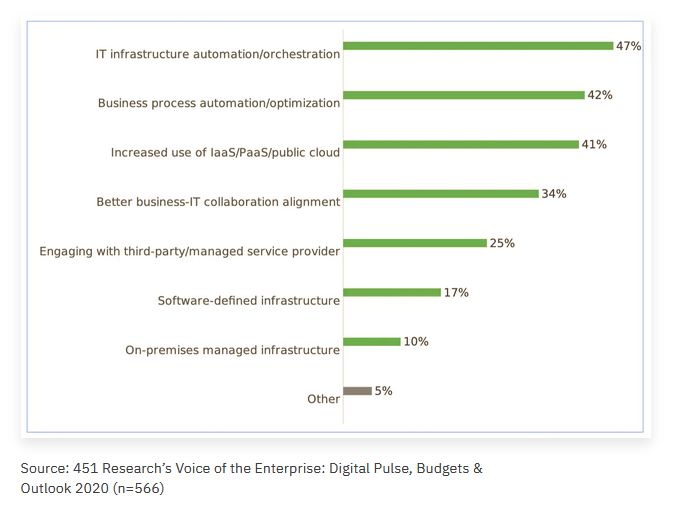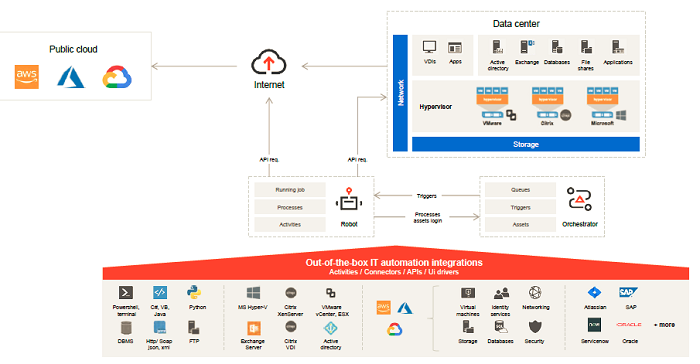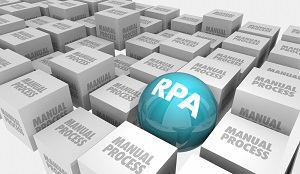Sponsored Post
Robotic process automation (RPA) is a contemporary form of business process automation that allows for anyone to define a set of directives for a robot or “bot” to perform. RPA bots are capable of imitating most human-computer interactions in order to carry out a vast array of error-free tasks, at high volume and high rate of speed.
RPA automates ordinary processes that previously required human action, to a large degree performed in a repetitive, time-consuming fashion. This is the primary factor for how RPA promises to boost efficiency for enterprises. A central theme in RPA proliferation, is to capture enterprise-wide potential with a robot for every person. Get ideas and pre-built automations from the company’s workforce and crowdsource RPA ideas from business users to produce a high-value pipeline.
This article focuses on how enterprises can take advantage of RPA to achieve benefits such as lowering operating costs, integrating existing systems, and improving the bottom line within the scope of IT operations.
RPA for Information Technology
The advancing use of RPA is a great boon to IT organizations within enterprises. RPA is an application of technology administered by business logic using structured entry points, designed for automating business processes. Using RPA tools, a company can configure a robot to capture and interpret applications for processing a transaction, transforming data, triggering responses and forming channels of communication with other digital systems. RPA scenarios range from something simple like generating an automatic response to a system alert to deploying an array of bots, each programmed to automate jobs in an ERP system.
RPA solutions have a myriad of potential uses in enterprise IT environments. This is due to the many repetitive and comparatively simple processes IT teams must manage. As a result, many enterprises are working to modernize their IT infrastructure and preparing to accelerate process automation initiatives across the organization and its lines of business. In a 2020 survey, “IT infrastructure automation/orchestration” was the top answer offered to the question “What will your organization likely invest in to improve IT operations or service delivery?” The figure below clearly shows the focus on automation with respect to top IT spending priorities.

RPA and Artificial Intelligence
As more enterprises realize the power of RPA, many are seeing an even more compelling facet of the technology – the integration of AI. However, the use of AI isn’t in the typical sense since RPA doesn’t learn as it goes like a deep neural network. For example, if some aspect changes in the automated task, the RPA bot typically won’t be able to determine that on its own. But AI technologies that supplement and copy human judgment and behavior tend to complement RPA technologies that replicate human actions based on rules. We’re witnessing the situation where RPA gets deployed in concert with AI, a combination that often increases capabilities.
Popular AI technologies, in particular machine learning, deep neural networks, natural language processing (NLP), speech recognition, intelligent optical character recognition (OCR), and computer vision are adding new features to the RPA toolset for automating higher-order tasks that in the past required the perceptual and judgment capabilities of humans.
We’re seeing RPA workflows enabled by these capabilities at important decision points, expanding capabilities that were not possible before. This advent, for example, allows images and text documents to be viewed holistically by an algorithm, and interpreted for downstream logic and scheduling.
Leveraging AI and the on-going development of processing increasingly complex data leads to the ability of imitating human-level decisions. This facilitates quicker decision-making and excludes the potential for human bias.
Sample Use Cases
RPA solutions facilitate countless potential uses in IT environments in order to solve the needs of the many repetitive and relatively simple processes IT personnel administer. Here are some examples of the areas RPA can address:
- Cybersecurity – security orchestration automation and response
- User and infrastructure management
- IT service management, service desk
- Cloud compute usage optimization, reduce compute and operational costs
- License usage optimization
- Audit functions
- IT automation enables green IT
Consider UK-based multi-national Reckitt, a leader in the hygiene, health and nutrition industries. The company adopted RPA solutions with the key goal to deliver always-on, always-available IT with a service experience looking toward to the future. In just over a year, Rickitt deployed 80+ bots that helped achieve a 20% cost savings in IT operations with only 7 months required to recoup their automation investment.
RPA Solutions from UiPath

UiPath’s RPA platform paves the way for fully automating the various areas of IT in an enterprise and can take over the tedious jobs that dictate so much of regular work of IT personnel. The UiPath platform helps enterprises do more with the resources and assets they already have in place. Most enterprises are filled with repetitive manual processes that limit the organization from running at peak capacity. By automating such tasks, the UiPath platform advances a cascading effect that multiplies efficiency across a wide swath of processes, operations, and business units.
The UiPath platform supports a broad range of automation areas including UI, testing, APIs, business process management, as well as additional built-in integrations running the background. The UiPath platform offers more than 500 pre-built activities that enable IT departments to automate virtually every functional area within their cloud-based and on-prem IT environments. The platform includes a low-code app builder for delivering engaging experiences powered by automation. The marriage of low code and the power of automation makes the IT organization more productive.

The UiPath platform integrates with leading cloud providers such as AWS, GCP, and Azure, and functions within public, private, and hybrid cloud environments. In addition, UiPath out-of-the-box activity packages serve to automate processes related to desktop-as-a-service (DaaS) and application-as-a-service for provisioning Windows and Linux cloud-based virtual desktops.
In Conclusion
As we’ve seen in this article, RPA has emerged as an exciting and growing technology that uses software bots that can automate repetitive human activities within and across a multitude of IT processes. RPA delivers capabilities for automating data and process flows coupled together at a granular level to empower inter-application data and process integration amid source and target systems. Coupled with various AI technologies, RPA is able to make sense of unstructured data, assist in guiding automation tasks, enable them to become more intelligent as they execute, and complement the skills of IT professionals with the means to make predictions, decisions, and recommendations. In this regard, RPA is able to lay the foundation for digital workforces designed to extend IT organizations with skills to make them more effective and multidimensional in their abilities.
Industry-leading enterprises are adopting RPA to enable collaboration among IT professionals for the purpose of minimizing errors, and lowering costs, improving business performance advancing specific or desired outcomes, and performing operations at scale. In the final analysis, when RPA plays an essential role in IT process automation, the IT function can be more efficient in their efforts and effective in the execution of their tasks. Additionally, this provides IT organizations the capacity to extract more value from other IT investments.

Contributed by Daniel D. Gutierrez, Editor-in-Chief and Resident Data Scientist for insideBIGDATA. In addition to being a tech journalist, Daniel also is a consultant in data scientist, author, educator and sits on a number of advisory boards for various start-up companies.





actually I am expanding my business in the similar niche. Its gonna be very much helpful for me in my journey